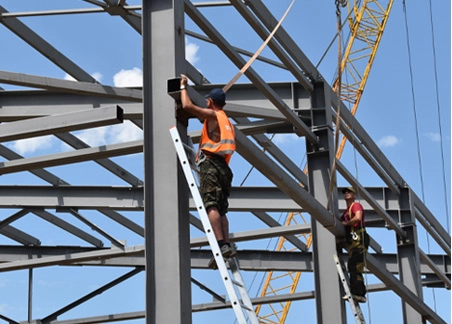
-
 Afrikaans
Afrikaans -
 Albanian
Albanian -
 Amharic
Amharic -
 Arabic
Arabic -
 Armenian
Armenian -
 Azerbaijani
Azerbaijani -
 Basque
Basque -
 Belarusian
Belarusian -
 Bengali
Bengali -
 Bosnian
Bosnian -
 Bulgarian
Bulgarian -
 Catalan
Catalan -
 Cebuano
Cebuano -
 Corsican
Corsican -
 Croatian
Croatian -
 Czech
Czech -
 Danish
Danish -
 Dutch
Dutch -
 English
English -
 Esperanto
Esperanto -
 Estonian
Estonian -
 Finnish
Finnish -
 French
French -
 Frisian
Frisian -
 Galician
Galician -
 Georgian
Georgian -
 German
German -
 Greek
Greek -
 Gujarati
Gujarati -
 Haitian Creole
Haitian Creole -
 hausa
hausa -
 hawaiian
hawaiian -
 Hebrew
Hebrew -
 Hindi
Hindi -
 Miao
Miao -
 Hungarian
Hungarian -
 Icelandic
Icelandic -
 igbo
igbo -
 Indonesian
Indonesian -
 irish
irish -
 Italian
Italian -
 Japanese
Japanese -
 Javanese
Javanese -
 Kannada
Kannada -
 kazakh
kazakh -
 Khmer
Khmer -
 Rwandese
Rwandese -
 Korean
Korean -
 Kurdish
Kurdish -
 Kyrgyz
Kyrgyz -
 Lao
Lao -
 Latin
Latin -
 Latvian
Latvian -
 Lithuanian
Lithuanian -
 Luxembourgish
Luxembourgish -
 Macedonian
Macedonian -
 Malgashi
Malgashi -
 Malay
Malay -
 Malayalam
Malayalam -
 Maltese
Maltese -
 Maori
Maori -
 Marathi
Marathi -
 Mongolian
Mongolian -
 Myanmar
Myanmar -
 Nepali
Nepali -
 Norwegian
Norwegian -
 Norwegian
Norwegian -
 Occitan
Occitan -
 Pashto
Pashto -
 Persian
Persian -
 Polish
Polish -
 Portuguese
Portuguese -
 Punjabi
Punjabi -
 Romanian
Romanian -
 Russian
Russian -
 Samoan
Samoan -
 Scottish Gaelic
Scottish Gaelic -
 Serbian
Serbian -
 Sesotho
Sesotho -
 Shona
Shona -
 Sindhi
Sindhi -
 Sinhala
Sinhala -
 Slovak
Slovak -
 Slovenian
Slovenian -
 Somali
Somali -
 Spanish
Spanish -
 Sundanese
Sundanese -
 Swahili
Swahili -
 Swedish
Swedish -
 Tagalog
Tagalog -
 Tajik
Tajik -
 Tamil
Tamil -
 Tatar
Tatar -
 Telugu
Telugu -
 Thai
Thai -
 Turkish
Turkish -
 Turkmen
Turkmen -
 Ukrainian
Ukrainian -
 Urdu
Urdu -
 Uighur
Uighur -
 Uzbek
Uzbek -
 Vietnamese
Vietnamese -
 Welsh
Welsh -
 Bantu
Bantu -
 Yiddish
Yiddish -
 Yoruba
Yoruba -
 Zulu
Zulu


Dec . 12, 2024 14:30 Back to list
v mech chain pulley
Understanding the Mechanics of Chain and Pulley Systems
The mechanics of chain and pulley systems represent a fundamental aspect of mechanical engineering that facilitates the movement of heavy loads with minimal effort. Chain and pulley systems are commonly used in various applications, from construction cranes to simple flagpoles, showcasing their versatility, efficiency, and simplicity.
At the core of these systems is the pulley, a wheel on an axle designed to support movement and change the direction of force applied to a rope or cable. When combined with a chain, the system can effectively lift objects much heavier than manual effort would typically allow. The primary mechanics involve the conversion of linear motion into rotational motion, enabling smoother and more efficient load handling.
Understanding the Mechanics of Chain and Pulley Systems
The principles of mechanical advantage explain how pulleys make it easier to lift heavy loads. Mechanical advantage is the ratio of output force to input force. A larger mechanical advantage means less input force is needed to achieve a certain output force, which is precisely why pulleys are favored in lifting applications. By carefully arranging multiple pulleys, engineers can design systems that optimize this mechanical advantage, creating highly efficient lifting devices that save time and labor.
v mech chain pulley

When designing a chain and pulley system, several factors must be considered to ensure maximal efficiency and effectiveness. Firstly, the material of the chain and the pulley must be strong enough to withstand the forces involved. Traditionally, steel chains are favored for their durability and ability to handle substantial loads without breaking. The configuration of the pulleys also plays a crucial role; they need to be aligned correctly to prevent binding or undue wear on the chain or rope.
Another consideration is the friction within the system. Friction can greatly affect the performance of a pulley system, as it requires additional force to overcome resistance. To minimize friction losses, lubricants are often applied, and pulleys are engineered with materials and designs that reduce drag. This careful attention to detail can significantly enhance the overall efficiency of the system.
The importance of chain and pulley systems extends beyond simply lifting objects. They are also integral in various mechanical systems where precise control and movement are required. For instance, these systems can be found in conveyors, hoists, and even in the intricate machinery of amusement park rides. Their influence in modern engineering is profound, making tasks easier and safer across a wide spectrum of industries.
In conclusion, the chain and pulley system exemplifies the principles of mechanical advantage and efficiency within mechanical engineering. By combining simple yet effective components, they allow for the lifting of heavy loads with reduced effort, making them an invaluable asset in practical applications. As technology evolves, these systems will continue to be refined, ensuring that they remain relevant and effective in meeting societal needs in innovative ways. Understanding their mechanics is crucial for anyone looking to venture into fields involving heavy lifting or mechanical design.
Latest news
What Are Construction Tools and How Are They Used?
NewsJul.11,2025
Professional-Grade Duct Rodding Tools for Superior Cable Installation
NewsJul.11,2025
Enhancing Safety and Efficiency with Modern Hot Stick Solutions
NewsJul.11,2025
Empowering Cable Installation with Advanced Rodder Solutions
NewsJul.11,2025
Elevate Your Cable Installation Projects with Cable Pulling Tools
NewsJul.11,2025
Efficient Cable Handling Solutions: Cable Rollers for Sale
NewsJul.11,2025











